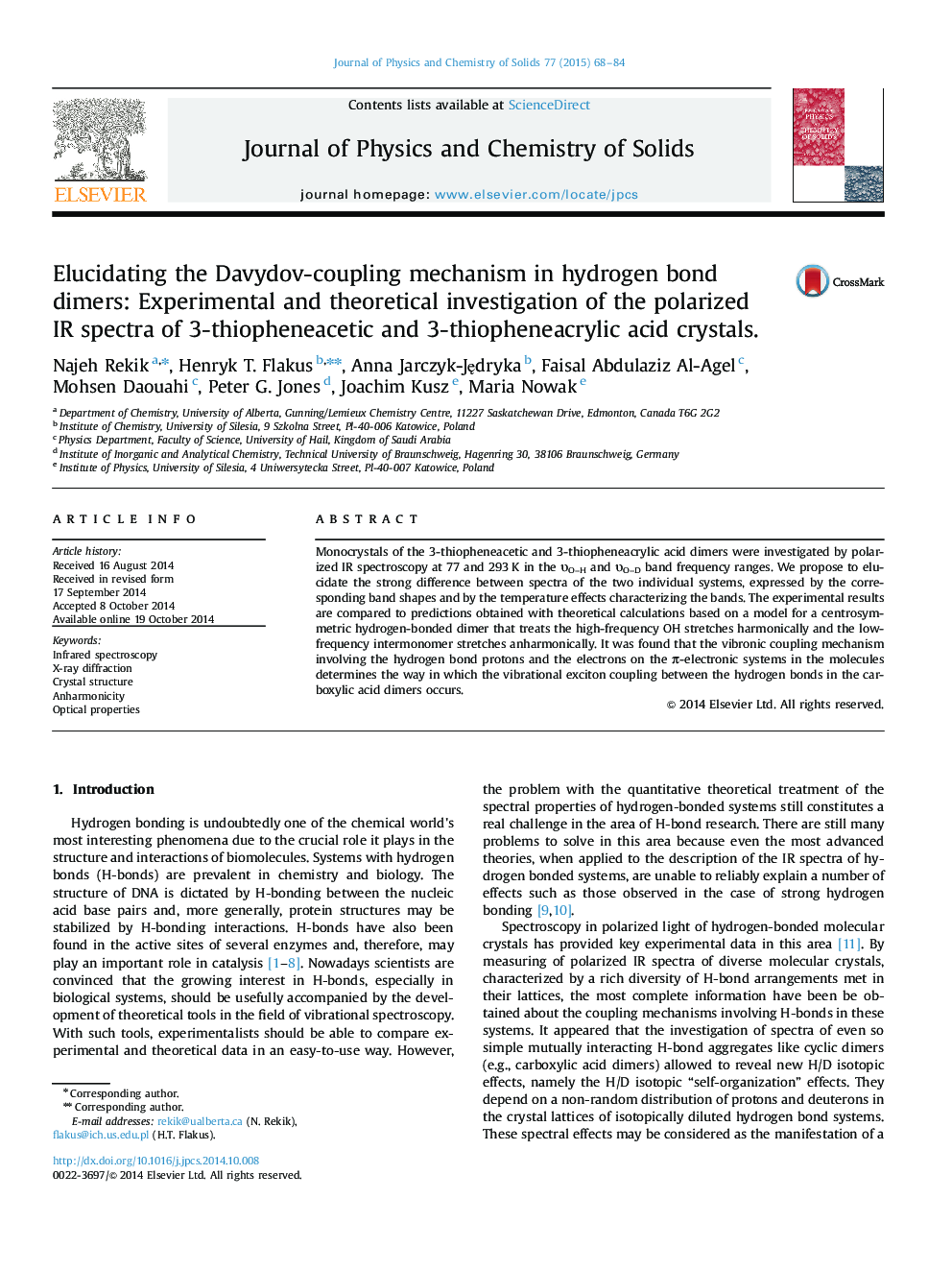| کد مقاله | کد نشریه | سال انتشار | مقاله انگلیسی | نسخه تمام متن |
|---|---|---|---|---|
| 1515598 | 1511528 | 2015 | 17 صفحه PDF | دانلود رایگان |

• Monocrystals of the 3-thiopheneacetic and 3-thiopheneacrylic acid dimers were investigated by polarized IR spectroscopy at 77 and 293 K in the υO‒H and υO‒D band frequency ranges.
• Strong coupling in 3-thiopheneacrylic acid dimers prefers a “head-to-tail”-type Davydov coupling widespread by the π-electrons.
• The weak through-space coupling in 3-thiopheneacetic acid dimers, of a van der Waals-type, is responsible for the “side-to-side”-type coupling.
• The two exciton coupling mechanisms are at the origin of the observed difference in the temperature-induced evolution of the compared spectra.
Monocrystals of the 3-thiopheneacetic and 3-thiopheneacrylic acid dimers were investigated by polarized IR spectroscopy at 77 and 293 K in the υO‒H and υO‒D band frequency ranges. We propose to elucidate the strong difference between spectra of the two individual systems, expressed by the corresponding band shapes and by the temperature effects characterizing the bands. The experimental results are compared to predictions obtained with theoretical calculations based on a model for a centrosymmetric hydrogen-bonded dimer that treats the high-frequency OH stretches harmonically and the low-frequency intermonomer stretches anharmonically. It was found that the vibronic coupling mechanism involving the hydrogen bond protons and the electrons on the π-electronic systems in the molecules determines the way in which the vibrational exciton coupling between the hydrogen bonds in the carboxylic acid dimers occurs.
Figure optionsDownload as PowerPoint slide
Journal: Journal of Physics and Chemistry of Solids - Volume 77, February 2015, Pages 68–84